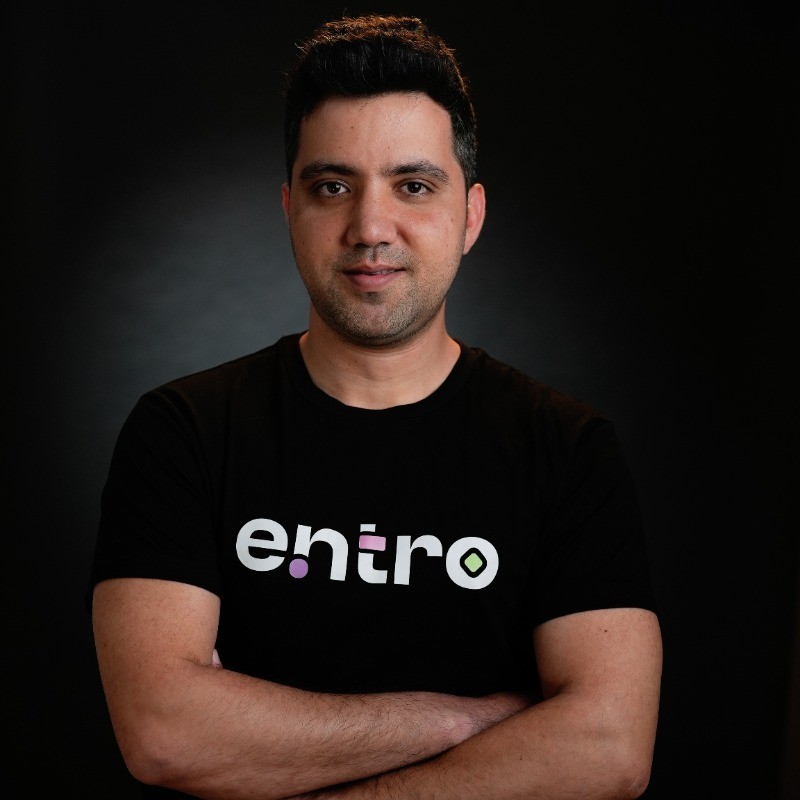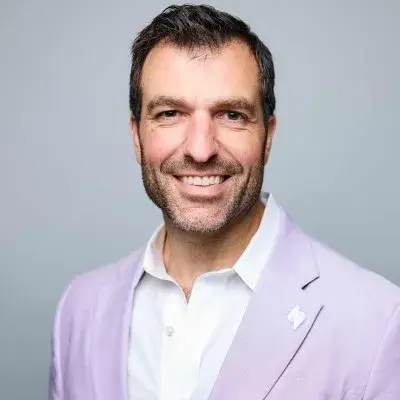Ready to build your own Founder-Led Growth engine? Book a Strategy Call
Frontlines.io | Where B2B Founders Talk GTM.
Strategic Communications Advisory For Visionary Founders
Actionable
Takeaways
Do your homework before the meeting:
Tony's biggest frustration as a buyer was vendors who showed up unprepared, asking generic questions like "what keeps you up at night?" without understanding the organization or its priorities. He literally had a secret signal with his assistant to escape these meetings. B2B founders must research prospects thoroughly, understand their specific challenges, and craft relevant value propositions before requesting meetings. Generic discovery calls are a waste of everyone's time and destroy credibility.
Fix the product before scaling sales:
The previous CEO at Intrusion hired dozens of salespeople to sell a product that wasn't ready, resulting in zero sales during his tenure. Tony prioritized fixing scalability, reliability, and feature gaps before rebuilding the go-to-market engine. B2B founders often face pressure to hire sales teams early, but selling a broken product destroys market credibility and wastes resources. Product-market fit must precede sales-market fit.
Find the right distribution channel for your product:
Intrusion's breakthrough came when they stopped trying to sell directly to end customers and focused on managed service providers and managed service security providers. This channel strategy worked because Intrusion's solution enhances existing security stacks rather than replacing them, making it perfect for MSPs serving SMBs that can't afford enterprise-level security expertise. B2B founders should carefully analyze whether their solution is better suited for direct sales, channel partnerships, or hybrid approaches based on customer buying behavior and implementation complexity.
Embrace being in a category of one:
Despite pressure from analysts and customers to fit into existing categories, Intrusion discovered they occupy a unique position in Applied Threat Intelligence. While this creates messaging challenges, it also eliminates direct competition. Tony worked with Gartner and other analysts to establish that no other company does exactly what Intrusion does. B2B founders shouldn't force themselves into existing categories if their technology is truly differentiated—creating a new category can be more valuable than competing in crowded ones.
Leverage legal training for crisis management:
Tony's law school background taught him to analyze situations from a 360-degree perspective, understand all stakeholder positions, and develop comprehensive strategies. This skill set proved invaluable during Intrusion's turnaround and his previous crisis management roles. B2B founders facing difficult situations should adopt this approach: clearly define the problem, gather multiple perspectives, identify all stakeholders, and develop a theory of the case for moving forward.
Conversation
Highlights
The Federal CIO Who Saved a Cybersecurity Company: Tony Scott’s Crisis Playbook
Most turnaround stories start with a struggling company hiring an experienced executive. Tony Scott’s story at Intrusion starts with him literally planning to poach their talent for other investments.
In a recent episode of Category Visionaries, Tony Scott, CEO & President of Intrusion, shared how his background as CIO of the federal government, VMware, Microsoft, General Motors, and Disney prepared him for one of the most challenging turnarounds in cybersecurity. When he first encountered Intrusion three and a half years ago, the company was running out of money, facing SEC investigations, and dealing with shareholder lawsuits after the board fired the previous CEO.
“I originally looked at the company with the idea that maybe some of the talented folks at Intrusion would be good ads to some of the other companies that were invested in or talking to,” Tony explains. “Or maybe the IP that the company had could be gotten, you know, relatively inexpensively given the fact that they were in bad shape.”
But the deeper he dug into Intrusion’s technology and team, the more he saw potential for a complete turnaround. Today, Intrusion has stabilized its technology, raised sufficient capital, and established itself in the Applied Threat Intelligence category. The journey from crisis to recovery offers crucial lessons for B2B founders navigating their own challenging pivots.
The Crisis That Created Opportunity
The situation Tony inherited at Intrusion was a textbook example of how not to scale a B2B technology company. The previous CEO had made a classic mistake: hiring dozens of salespeople to sell an unready product.
“The prior CEO had created a new product and then the new product really wasn’t ready for the marketplace. But he hired dozens of salespeople to go out and sell it anyhow,” Tony recalls. “It resulted in no sales during his tenure, which was a little nuts, but understandable if the product isn’t ready.”
This fundamental misalignment between product readiness and sales investment had created a cash burn crisis. The company was hemorrhaging money with nothing to show for it, leading to the CEO’s termination and subsequent legal complications.
For Tony, the situation presented a clear framework for recovery: fix the product first, then rebuild the go-to-market engine. “So we invested in fixing the product issues early on. Scalability, reliability, needed features and so on.”
The Power of Preparation: Lessons from the Buyer’s Seat
Tony’s approach to the Intrusion turnaround was heavily influenced by his decades of experience as a technology buyer across some of the world’s largest organizations. His insights into what drives buyers crazy have become legendary among his sales team.
“The bad ones were somebody worked really hard to get a meeting and then they sat down in your office and said, so what keeps you up at night?” Tony explains. “And nothing about our organization or what our priorities were or anything else.”
The frustration was so common that Tony had developed a system to escape these poorly prepared meetings. “I always had an arrangement with my admin, whoever it was at the time, where I could send her a secret signal like, get me out of this meeting because this is not going well.”
This experience shaped Tony’s fundamental philosophy for B2B sales: preparation is everything. “So I tell our sellers, you know, don’t do that. Don’t show up and, you know, ask these crazy questions, do your homework, figure out what’s going on, figure out why we’re relevant, and if we’re not, don’t waste anybody’s time.”
Finding the Right Distribution Channel
One of Tony’s most significant strategic decisions was completely overhauling Intrusion’s go-to-market approach. Instead of continuing the failed direct sales strategy, he pivoted to targeting managed service providers and managed service security providers.
“We identified our target market as managed service providers and managed service security providers,” Tony explains. “Because what we can deliver is a more fine grained filter for all the bad things on the Internet.”
This channel strategy worked because Intrusion’s technology was designed to enhance existing security stacks rather than replace them. “We don’t replace anything else, we just make what you have work a lot better than it does today.”
The MSP channel proved ideal for several reasons. These providers serve small and medium businesses that need enterprise-level security but lack the resources to build it themselves. As Tony puts it: “There’s no organization of any size that doesn’t have cybersecurity worries these days. And if you can outsource to somebody who’s competent and capable and really knows how to use the tools that are out there in a productive, efficient, scalable way, you’re going to do it.”
Creating a Category of One
Perhaps the most challenging aspect of Intrusion’s positioning was communicating exactly what the company does. In a crowded cybersecurity market, customers want to put vendors into familiar buckets.
“The hardest part of our journey, though, has been very succinctly communicating. This is messaging about what our product does,” Tony admits. “Because on the surface, when you first talk to customer, they want to put you in a bucket.”
Rather than force themselves into an existing category, Tony worked with industry analysts to establish Intrusion’s unique position. “After lots of conversations with Gartner and analysts from other organizations all have come to this same conclusion, that we’re in a pretty unique bucket by ourselves. No other company kind of does exactly what we do.”
This positioning in Applied Threat Intelligence distinguishes Intrusion from traditional network monitoring tools through their packet-level, real-time analysis approach. “What we look at is packet by packet. So much more fine grained, much more granular, and we do it real time.”
The Legal Mind in Crisis Management
Tony’s background includes law school and bar admission in California, though he never practiced law. This legal training proved invaluable during the Intrusion turnaround and his previous crisis management roles.
“The lawyer training did something special for me, which is it allowed me to train my mind to look at situations from sort of a 360 degree view,” Tony explains. “If you’re a lawyer, you want to know what the other side’s arguments are going to be. You want to know what the law is, you want to know, you know, a lot of different things that allow you to assess the situation and then carve out a approach that you know will be successful.”
This systematic approach to problem-solving has become Tony’s default framework for navigating complex situations: “When you don’t know what to do, go back to basics, you know, make sure you have clarity and what the problem is. Get a bunch of different viewpoints or perspectives, understand who the stakeholders are and then develop a theory of the case in terms of how you’re going to go make progress and get people on board with that.”
Beyond the Turnaround: Mission-Driven Leadership
Three and a half years into the turnaround, Tony’s motivation extends beyond financial returns. His drive comes from the broader mission of improving cybersecurity in an increasingly dangerous digital landscape.
“I’m very motivated by a couple of things. One is just the mission of creating better cybersecurity, I think, is paramount to all of this,” Tony shares. “You know, it just bothers me to, you know, all get out that, you know, people are losing their wealth, their happiness, their privacy because of bad acts of bad actors, you know, on the criminal side and so on.”
This mission-driven approach extends to his team, many of whom have been with Intrusion for decades. “We have people that have been here 30 years working on some of these problems who are shareholders in the company and going through the ups and downs. And I work every day for those people as well.”
The Ongoing Challenge of Public Company Leadership
Running a public company adds layers of complexity that many private company CEOs never experience. Tony’s advice for founders aspiring to public company leadership is sobering: “A lot of people, you know, think they might aspire to be a public company CEO. I would tell you in many cases, it’s not all that it’s cracked up to be.”
The overhead is substantial: “There’s regulatory filings that are constantly needed. There’s noisy shareholders that want attention. There’s customers who, because you’re a public company, have a microscope on everything you’re doing in some respects.”
Yet Tony’s experience across multiple large public companies prepared him for these challenges. The discipline required was “second nature in a lot of ways. But being the guy at the top is no matter big or small, if it’s a public company, it’s still a fairly heavy responsibility.”
Lessons for B2B Founders
Tony’s journey from crisis to recovery at Intrusion offers several key lessons for B2B founders:
Product readiness must precede sales scaling. The previous CEO’s mistake of hiring salespeople for an unready product created a cash burn crisis that nearly killed the company.
Channel strategy can unlock growth when direct sales fail. Intrusion’s pivot to MSPs transformed their market approach and aligned their solution with customer buying behavior.
Category creation becomes necessary when you’re truly differentiated. Rather than fighting in crowded existing categories, establishing Applied Threat Intelligence as a distinct space eliminated direct competition.
Preparation separates successful sellers from time-wasters. Tony’s buyer experience shows that doing homework before meetings is the minimum bar for credibility.
Legal thinking provides frameworks for crisis management. The ability to analyze situations from multiple perspectives and develop comprehensive strategies proves invaluable during challenging periods.
Tony’s turnaround at Intrusion demonstrates how executive experience, strategic thinking, and mission-driven leadership can transform struggling B2B companies. In an industry where technical differentiation alone isn’t enough, his approach shows the power of combining deep domain expertise with disciplined go-to-market execution.



















































































































































